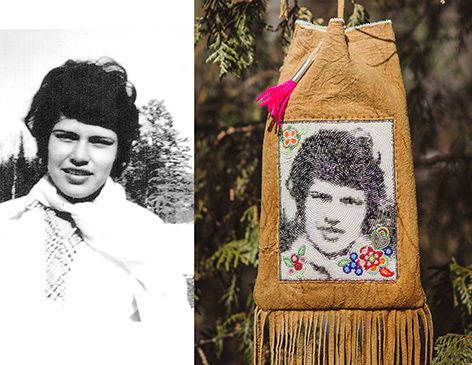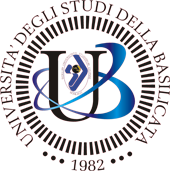
The Day My Photographs Danced: Materializing Photographs of My Anishinabe Ancestors
Abstract
Keywords
References
BANKS, M.
Visual anthropology: Image, object and
interpretation. In J. Prosser (Ed.), Image-based
research: A sourcebook for qualitative
researchers (pp. 6-19). London: UK Falmer Press.
BARBER, K.
Improvisation and the art of making things
stick. In T. Ingold & E. Hallam (Eds.), Creativity
and Cultural Improvisation, (pp. 25-41).
Oxford: Berg.
BARTHES, R.
Camera Lucida: Reflections on photography.
Hill and Wang: New York, NY.
BELL, J. A.
Out of the mouths of crocodiles: Eliciting
histories in photographs and string-figures.
History and Anthropology, 21(4), 351-373.
Promiscuous things: Perspectives on cultural
property through photographs in the Purari
delta of Papua New Guinea. International
Journal of Cultural Property, 15, 123-139.
BELTING, H.
Image, medium, body: a new approach to
iconology. Critical Inquiry 31, 302-319.
BENNETT, J.
Vibrant matter: A political ecology of things.
Duke University Press.
The agency of assemblages and the North
American blackout. Public Culture,17(3), 445-466.
BERKOFER, D.
‘Trace memories’: Clothing as metaphor in the
works of Doris Salcedo’. Amnesia. Oberlin:
Allen Memorial Art Museum.
BUNN, S.
Materials in Making. In T. Ingold (Ed.),
Redrawing anthropology: Materials,
movements, lines, (pp. 21-32). Surrey: Ashgate.
COLEMAN, R.
‘Be(come) yourself only better’:
Self-transformation and the materialization of
images. In L. Guillame & J. Hughes (Eds.),
Deleuze and the body. Edinburgh: University of
Edinburgh Press.
BROWN, B.
Thing theory. Critical Inquiry, 28(1), 1-22.
CONNERTON, P.
How societies remember. UK: Cambridge
University Press.
COOMBES, A.
Making history memorable. In History after
apartheid: Visual culture and public memory in
democratic South Africa. USA
CORBIERE, A. - MIGWANS, C.
Animikii miiwaa mishibizhiw: Narrative images
of the thunderbird and the underwater panther.
In D. W. Penney and G. McMaster (Eds.), Before
and after the horizon: Anishinaabe artists of
the Great Lakes. (pp. 37-50). Washington, DC:
National Museum of the American Indian,
Smithsonian Institution.
EDWARDS, E.
Objects of Affect: Photography Beyond the Image.
Annual Review of Anthropology, 41, 221-234.
Photographs and the material performance of
the past. History and Theory, 48(4), 130-150.
Material beings: Objecthood and ethnographic
photographs. Visual Studies, 17(1), 67-75.
Making Histories: The Torres Strait Expedition
of 1898. Pacific Studies, 20(4):13-34.
ERDRICH, Louise
Books and Islands in Ojibwe Country.
Washington: National Geographic.
FREEMAN, L. - NIENASS, B. - DANIEL, R.
Editorial. Memory Studies, 9(1), 3-12.
FRIEDMAN, J.
Muscle memory: Performing embodied
knowledge. In R.C. Smith (Ed.), Text and
Image: Art and the performance of memory.
New Brunswick, USA: Transaction Publishers.
GELL, A.
The problem defined: The need for an
anthropology of art. In Art and Agency
(pp.12-27). Oxford: Oxford University Press.
GILLESPIE, S. D.
Maya memory work. Ancient Mesoamerica,
(2), 401-414.
GLASS, A.
A cannibal in the archive: performance,
materiality, and (in)visibility in unpublished
Edward Curtis photographs of the
Kwakwaka’wakw Hamat’sa. Visual Anthropology
Review, 25(2): 128-149.
GRIMSHAW, A. - RAVETZ, A.
Introduction. In A. Grimshaw & A. Ravetz
(Eds.), Visualizing anthropology (pp. 69-80).
Portland, Oregon: Intellect.
HEVENOR, J.
, December 8 Traces of the past [Blog].
Retrieved from www.pier21.ca/blog/jenniferhevenor/
traces-of-the-past
DEAN, J.
, May 7 When the self emerges: Is that me in
the mirror? [Web log comment]. Retrieved from
www.spring.org.uk/the1sttransport
HIRSCH, M.
The generation of postmemory: Writing and
visual culture after the holocaust. New York:
Columbia University Press.
INGOLD, T.
Making: Anthropology, archaeology, art and
architecture. New York, NY: Routledge.
Worlds of sense and sensing the world: A
Response to Sarah Pink and David Howes.
Social Anthropology/Anthropologie Sociale,
(3), 313-317.
Bringing things to life: Creative entanglements
in a world of materials. Working paper #15.
Realities: Part of the ERSC National Centre
for Research Methods, 1-14.
Materials against materiality. Archaeological
Dialogues, 14(1): 1-16.
INGOLD, T. - HALLAM, E.
Creativity and the Art of Improvisation: An
Introduction. In T. Ingold & E. Hallam, (Eds.),
Creativity and Cultural Improvisation (pp. 1-24).
Oxford: Berg.
KEANE, W.
Signs are not the garb of meaning: On the social
analysis of material things. In D. Miller (Ed.),
Materiality (pp. 182-205). Durham and
London: Duke University Press.
LEAVY, P.
Method meets art: Arts-based research practice.
New York, NY: The Guilford Press.
JEFFRIES, J.
Introduction. In J. Jeffries, D. W. Conroy, H. & H.
Clark (Eds.), The handbook of textile culture
(pp. 3-16). London, UK: Bloomsbury.
Johnson, K.
Performing pasts for present purposes:
Reenactment as embodied performative history.
In D. Dean, Y. Meerzon, & K. Prince (Eds.),
History, memory, performance (pp. 36-52).
New York, NY: Palgrave Macmillan.
JONES, A.
Memory and material culture. UK:
Cambridge University Press.
KNAPPETT, C.
Networks of Objects, Meshworks of Things. In T.
Ingold (ed.), Redrawing Anthropology
Materials, Movements, Lines (pp. 45-63).
Surrey, England: Ashgate.
KUCHLER, S. - MELION, S.
Images of memory: On remembering and
representation. USA: Smithsonian Institution
Press.
LATOUR, B.
Reassembling the social. An introduction to
Actor-Network Theory. Oxford: Oxford
University Press.
MARSDEN, D.
Expanding knowledge through dreaming,
wampum and visual arts. Pimatisiwin: A Journal
of Aboriginal and Indigenous Community
Health, 2(2), 53-73.
MCGLENNEN, M.
Horizon lines, medicine painting, and moose
calling: The visual/performative storytelling
of three Anishinaabeg artists. In D. W. Penney
and G. McMaster (eds.), Before and after the
horizon: Anishinaabe artists of the Great Lakes.
(pp. 341-362). Washington, DC: National
Museum of the American Indian, Smithsonian
Institution.
MCGUINNESS, S.
Lived lives: Materializing stories of young Irish
suicide. In J. Jeffries, D. W. Conroy, H. & H.
Clark (Eds.), The handbook of textile culture
(pp. 149-164). London, UK: Bloomsbury.
MILLER, D.
Theories of Things. In Stuff (pp. 42-78).
Cambridge UK: Polity Press.
MITCHELL, W. J. T.
What do pictures want? The lives and loves of
images. Chicago: University of Chicago Press.
OPPENHEIM, R.
Actor-network theory and anthropology after
science, technology, and society. Anthropological
Theory, 7(4), 471-493.
OWEN, E.
Give me a call. In A. Grimshaw & A. Ravetz
(Eds.), Visualizing anthropology (pp. 81-89).
Portland, Oregon: Intellect.
PAJACZKOWSKA, C.
Making known: The textiles toolbox:
Psychoanalysis of nine types of textile thinking.
In J. Jeffries, D. W. Conroy, H. & H. Clark (Eds.),
The handbook of textile culture (pp. 79-96).
London, UK: Bloomsbury.
PEDRI. C.
‘The drum is my document’: Decolonizing
research through Anishinabe song and drum.
International review of qualitative research,
(4), 385-406.
PEDRI-SPADE, C.
Waasaabikizoo: Our pictures are good
medicine. Decolonization, Indigeneity,
Education and Society, 5(1), 45-70.
PEDRI, C.
Nametoo: Evidence that he/she is/was present.
Decolonization, Indigeneity, Education, and
Society, 3(1), 73-100.
Pedri, C. (Producer) & PEDRI, C. (Director).
Gna-Giigadowin: Exploring our way of life
through Anishinabe song and drum
[Ethnographic Film]. (Available from
innovative-learning.publicethnography.net/
projects/gna-giidadowin-exploring-our-waylife-
through-anashinabe-song-and-drumceleste-
pedri
PINK, S.
Doing sensory ethnography. Thousand Oaks,
CA: Sage Publications Ltd.
PINNEY, C.
Materiality: An introduction. Things happen or
from which moment does that object come? In
D. Miller (Ed.), Materiality (pp. 256-272).
London, UK: Duke University Press.
PORTO, N.
Under the gaze of the ancestors: Photographs
and performance in colonial Angola. In E.
Edwards & J. Hart (Eds.), Photographs Objects
Histories: On the materiality of images
(pp. 113-131). New York, NY: Routledge.
ROBERTSON, C.
Body politics and the art of Norval Morriseau.
Canadian Art Review, 32(1/2), 70-78.
ROBERTS, M. N. - ROBERTS, A. N.
Memory and Luba art and the making of history.
African Arts, 29 (1), 22-35.
SCHNEIDER E.
Performance remains. In A. Jones & A.
Heathfield (Eds.), Perform, repeat, record
(pp. 138-150). Bristol, UK: Intellect.
SCHNEIDER, A. - WRIGHT, C.
Anthropology and art practice.
London: Bloomsbury.
Between art and anthropology: Contemporary
ethnographic practice. New York, NY: Berg.
SOYINI MADISON, D.
Critical ethnography. Thousand Oaks, CA: Sage.
STALLYBRASS, P.
Worn worlds: Clothes, mourning, and the life of
things. The yale review, 81, 35-75.
STOLLER, Paul.
“The Bureau of Memories: Archives and
Ephemera.” Fieldsights - Visual and New Media
Review, Cultural Anthropology Online, March
, 2015, www.culanth.org/fieldsights/647-thebureau-
of-memories-archives-and-ephemera
STOLLER, P.
Embodying colonial memories: Spirit
possession, power, and the Hauka in West
Africa. New York, NY: Routledge.
TROUILLOT, M.
Silencing the Past. Power and the Production of
History. Chapter 3: “An Unthinkable History.
The Haitian Revolution as a Non-Event”.
(pp. 70-107). Boston: Beacon Press.
WHITE, B.
We are at home: Pictures of the Ojibwe people.
St. Paul, MN: Minnesota Historical Society Press.
WILMOTT, C.
The lens of science: Anthropometric
photography and the Chippewa, 1890–1920,
Visual Anthropology, 18, 309–337.
WILSON, S.
Research is Ceremony: Indigenous Research
Methods. Canada: Fernwood Publishing.
WRIGHT, C.
Faletau’s photocopy or the mutability of visual
history in Roviana. In C. Morton & E. Edwards
(Eds.), Photography, anthropology and history:
Expanding the frame (pp. 146–149). Burlington,
VT: Ashgate.
DOI: http://dx.doi.org/10.12835/ve2017.1-0078
Refbacks
- There are currently no refbacks.
ISSN Print 2499-9288
ISSN Online 2281-1605
Publisher Edizioni Museo Pasqualino
Patronage University of Basilicata, Italy
Web Salvo Leo
Periodico registrato presso il Tribunale di Palermo con numero di registrazione 1/2023


